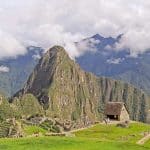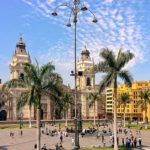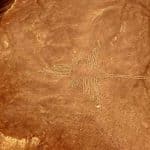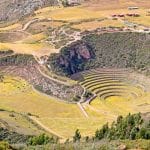There are journeys that you make just once in a lifetime. We are pretty sure that your trip to Peru will be one of these. And for this unique trip-of-a-lifetime, we have put together for you this special guide where you will find choice information about tourism and about traveling in Peru.
Let’s get to it, and begin exploring the Land of the Incas.
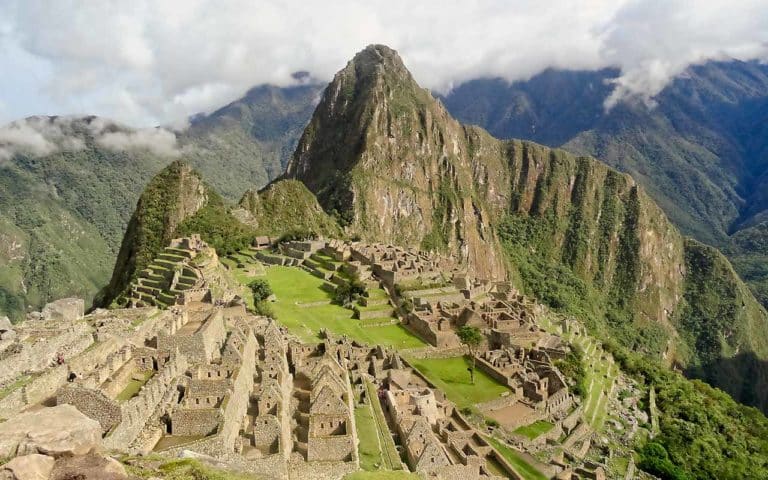
What is Peru?
Peru is one of the principle tourist destinations in South America. It is the cradle and the birthplace of the great Andean Civilization. It is the Land of the Incas, the Chankas, the Tiahuanacos, the Waris, the Nazcas, and the Mochicas…
It is the country where the blood of many people flows together and the voices of all on Earth rise up singing.
It is where Machu Picchu, One of the Seven Wonders of the Modern World, is located. Within the heart of its vast mountain ranges, the biggest river on the planet, the Amazon River, is born. And the world’s greatest bio-reserve, Manu National Park, can be found in Peru’s dense rainforest jungle.
Peru is history, customs, traditions, gastronomy, and a vibrant living culture. Peru is over 10,000 years of civilization. Peru is the Nazca Lines, it is Lake Titicaca, it is the Colca Canyon, it is the Ballestas Islands, it is Huacachina, it is…
The general characteristics of Peru
- Capital: Lima.
- Religion: Catholic and other Christian denominations.
- Languages: Spanish, Quechua and Aymara.
- Area: 1 285 216 km2.
- Population: 33 105 273 inhabitants.
- Lowest Point: Sechura Depression at -34 mbsl..
- Highest Point: Huascarán Mountain at 6768 masl.
- Time zone: Greenwich Mean Time – 5 hours
- Currency: sol (S/ PEN).
- ISO Code: 604 / PER / PE.
- Telephone prefix: +51.
- Form of government in Peru: representative united republic which is decentralized and has a president as head of its executive branch.
- Emergency phone numbers: medical emergency: 117, police: 105, firemen: 116.
What does Peru mean?
There are 2 versions about the derivation of the word, Peru:
- The first and the most accepted theory is that it comes from the geographic term Virú which is the name of a river in northern Peru. When the Spanish first arrived there, they asked what was the name of the country where they had landed. The inhabitants responded: Virú. So it is thought that the name of the country originated with the name of that river.
- The other version is that the Spanish introduced the name because Birú was the name of a tribal chieftain who lived near the Gulf of San Miguel in Panama.
Where is Peru?
The Republic of Peru is located in the central and the western part of South America. Its geographical coordinates are:
- Latitude 10°0’0″ S
- Longitude 76°0’0″ W
Its geographical limits are; Colombia and Ecuador to the north; Brazil to the east; Bolivia and Chile to the south; and the Pacific Ocean to the west.
How do you get to Peru?
You can get to Peru one of five ways:
- By air
- Overland
- By river
- Over the lake
- Over the sea.
From most countries, the best way to travel to Peru is by air. If you are coming from one of Peru’s neighboring countries (Chile, Bolivia, Ecuador or Brazil), travel by land is convenient. If you are coming from Brazil or Colombia, you could come to Peru via the Amazon River system. If you are coming from Bolivia, you could enter Peru by crossing over Lake Titicaca.
The Altitude of Peru
The elevation or the altitude of Peru varies a lot. The elevation of most of the coastal cities and of most of the jungle cities is just a few meters above sea level. On the other hand, the altitude of the cities in the Peruvian Andes Mountains is between 2000 and 4000 masl.
Climate
Peru’s climate is incredibly diverse. This is due to the geography of the country. Actually, Peru has 11 different ecological regions. And, of the 117 life zones on Earth, 84 of them can be found in Peru.
In order to better understand the climate of Peru, let’s describe it according to its geographic regions: the coast, the mountains, and the jungle.
- The Peruvian coast is comprised of a narrow strip of desert punctuated by fertile river valleys. To the west of this strip run the cold waters of the Pacific Ocean. In the north, the coast is warm and sunny all year long. Whereas, in the central and southern regions, the climate is more temperate and it hardly ever rains. However, the humidity is high.
- The Peruvian mountain region is composed of the wide central portion of the great Andean Mountain Range. The climate here is cooler. There are 2 definite seasons: rainy season ( December-March) and dry season (May – November).
- The jungle region of Peru is made up of vast rainforests and innumerable rivers which are all part of the watery Amazon Basin. Here the climate is hot, humid, and there is a lot of rain.
The history of Peru
To talk about the history of Peru is to reach back 20,000 years to the beginning of civilization. Peru’s history stretches from cave dwellers to the modern man of contemporary times. In order to better understand the history of Peru, we will divide it into 5 stages.
Human settlement
More han 20,000 years ago, wave after wave of nomadic hunters, gatherers, and fishermen came down from the north. Upon arrival, they began living in caves and forming small settlements. Among the main primitive cultures of that epoch, we can verify the following: Paccaicasa (20 000 B.C.), Chivateros (11 000 B.C.), Lauricocha (10 000 B.C.), Toquepala (9 000 B.C.) Guitarreros (7 500 B.C.), Huaca Prieta (2 500 B.C.) and Kotosh (2 500 B.C.).
Pre-Incan Cultures
With the passage of the centuries, the small settlements were incorporated into better organized societies. These societies used stone and mud for building materials, and they have come to be known as the pre-Incan cultures. Out of these pre-Incan cultures,. we will list the most important ones. Caral – Supe (3 000 – 1600 B.C.), Tiahuanaco (1 500 B.C. – 1,200 A.D..), Chavín 1 000 – 200 B.C.), Paracas (700 B.C..- 100 A.D), Moche o Mochica (300 B.C.- 800 A.D..), Nazca (100 – 650 A.D.), Wari (600 – 1,200 A.D.), Chachapoyas (800 – 1475 A.D.) and Chimú (1 100 – 1 400 A:D.).
Peru of the Incas
The Grand Inca Culture (13th-16th century) was the culmination of twenty thousand years of Andean culture.The Incas perfected and improved upon the discoveries of and the advances of their ancestors from the pre-Incan cultures. The Incas made great progress in all of the arts and they expanded their Incan nation (Tahuantinsuyo) to the point where they ruled over a great extent of western South America.
Actually, a large portion of this cultural legacy has been conserved in innumerable museums, and it has also been woven into the living fabric of Peruvian society.
Colonial Peru
Between the Spanish Invasion(1532) and Peruvian Independence (1821), Peru strained under the yoke of Spanish domination. During this 300 year period, Andean culture was pushed to the brink of extermination. Nevertheless, while suffering under the cultural domination of the Spanish, there were many brave men who fought for and gave their lives for freedom.
During this period a large number of convents and colonial churches were constructed upon the ruins and the foundations of the Incan temples. Besides these constructions, Peruvian customs and traditions are intermingled with a Spanish legacy.
Republican Peru
In the year,1821, Peru declared independence and the republican era began. Peruvian independence was not consolidated until 1824 when the Battles of Ayacucho and Junín were fought. Victory here finalized independence and sent the Spanish armies back across the sea. Since that time Peru has been the master of its own destiny.
The Peruvian Tourist Calendar
Peru has more holidays and festivities than almost any other country in the world. In the whole of its territory, Peruvians celebrate more than 3000 fiestas. The majority of these holidays actually celebrate the feast days of local patron saints. This is another not-always-welcome inheritance from colonial times.
Some celebrations, such as those below, go far beyond national boundaries.
- Virgen de la Candelaria
- Carnival (Mardi Gras)
- International Festival of the Vendimia
- Holy Week
- Qoyllur Rit’i
- Corpus Christi
- Inti Raymi
- Santuranticuy
- Peruvian Independence Days
- Santa Rosa de Lima
- Lord of the Miracles
- Qeswachaka and many more.
Tourism and tourist activities in Peru
Peru is a vast and an incredibly diverse country. It is fortunate to have so many natural wonders and such a rich cultural inheritance. You can discover and explore its beaches, mountains, rivers, and valleys. Enjoy the sand and the sea and 365 days a year of sunshine. For all of these reasons and more, it doesn’t matter how old you are, or what type of traveler you are. In Peru you will have an infinity of tourist activities to experience and enjoy.
Listed here is sample of some of the kinds of tourism that you can find in Peru: cultural tourism, ecotourism, live-in tourism, adventure tourism, rural tourism, snow tourism, mountain biking, sun and beach tourism, gastronomic tourism, business tourism, cruise ship tourism, urban tourism, lake and river tourism, mountain climbing tourism, religious tourism, bird-watching, spiritual tourism, luxury tourism, camping, sustainable tourism, and lots of other kinds of tourism, too.
Territorial Organization
Peruvian territory is subdivided in the following way:
- 24 regions
- 196 provinces
- 1874 districts
- 9385 indigenous community villages
- 1 constitutional province: Callao.
The principle cities of Peru
- Lima is the Capital of Peru and also Peru’s largest city. It is the main port of entry. It is the financial, political, and cultural center of the country. The principle museums and art galleries are located in Lima.
- Cusco. is the principle tourist city in Peru. It is also known as the Historic Capital of Peru. The main tourist destinations are located in Cusco: Machu Picchu, Rainbow Mountain, the Sacred Valley of the Incas, and Choquequirao.
- Arequipa is known as the White City. It is the second largest and the second most important city in Peru. It is famous for the Colca Canyon and the Santa Catalina Monastery.
- Puno. is the famous capital of the Peruvian altiplano. It is considered to be the Folkloric Capital of Peru. It is located on the shores of the legendary Lake Titicaca.
- Iquitos is the main city in the Peruvian jungle. Nearby is the largest protected zone in Peru, which is the Pacaya – Samiria National Park. Iquitos is located on banks of the world’s largest river, the Amazon River.
- Piura is one of the most important cities in northern Peru. It features eternal sunshine and beautiful beaches.
Other important cities are: Huancayo, Tarapoto, Cajamarca, Ica, Nazca, Puno, and there are many more.
Come and discover the wonders of Peru with us. Reserve one of our exclusive Tours to Peru!
Tourist destinations in Peru
Peru is known as the Pearl of the Pacific. Within Peru there are innumerable tourist sites. Therefore, we have put together a list our favorite ones. These are organized by which natural region in which they can be found in.
- On the Pacific Coast: Punta Sal, Máncora, Huanchaco, the Paracas National Reserve, the Nazca Lines, Caral…
- In the Andes Mountains: the Inca’s Baths, Rainbow Mountain, the Sacred Valley of the Incas, Lake Titicaca, Machu Picchu, Colca Canyon, Chavín de Huántar, Kuelap…
- In the Peruvian Jungle: Tambopata National Reserve – Candamo, Manu, the Amazon River, Pacaya Samiria National Park…
The necessary documents for traveling to Peru
The principle documents that are necessary for entering Peru are your passport and your Peruvian visa. A lot depends on which country you come from.
Remember that the time that you are allowed to stay in Peru is 183 days. If you are a student, it is important to bring your up-to-date student ID with you, so you will be able to take advantage of discounted student prices.
- If you are a citizen of Argentina, Bolivia, Chile, Colombia, Ecuador, Paraguay, Uruguay or Venezuela, you will not need a visa or a passport to enter Peru. Just bring you national identity card (DNI).
- If you are a citizen of America or of Western Europe, you will need your passport, but you won’t need a visa.
- If you are not from one of these countries:: Algiers, Egypt, Morocco, Argentina, Bolivia, Brazil, Colombia, Chile, Ecuador, Guyana, Paraguay, Uruguay, Venezuela, Belize, Costa Rica, Guatemala, Honduras, Mexico, Panama, Jamaica, the Dominican Republic, Brunei, China, South Korea , the Phillipines, India, Indonesia, Israel, Jordan, Mallasia, Singapore,Thailand, Turkey, Vietnam, Germany, Austria, Belgium, Bulgaria, Denmark, Slovakia,, Slovenia, Spain, Russia, Finland, France, Greece, Hungary, Italy, Luxemburg, Macedonia, the Low Countries, Poland, the Czech Republic, Republic of Serbia, Rumania, or the Ukraine, you will need your passport and your visa.
Although there is still more to say, we will stop here for now. In this tourist guide, many details have been left incomplete. We will be filling them in in a future post. We do believe that there is enough information above to enable you to plan and organize a fantastic journey to Peru. So, Happy Traveling! And have great time discovering and exploring the natural marvels and the cultural wonders of this magical country.
